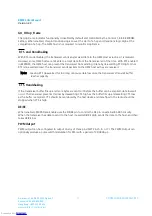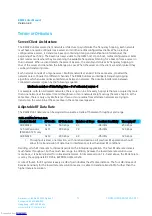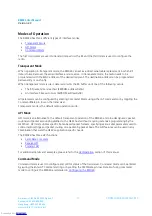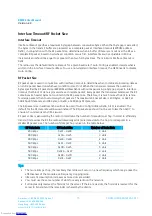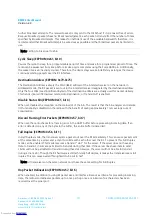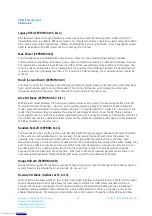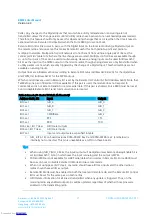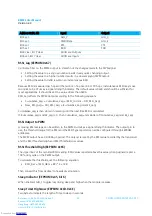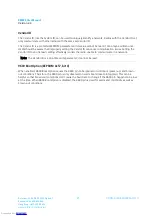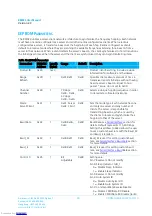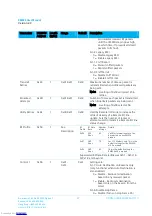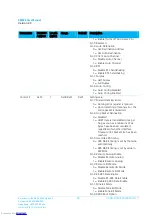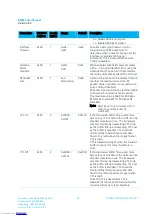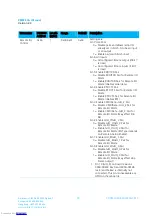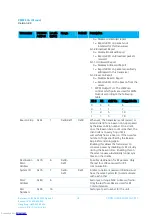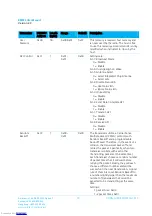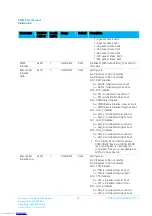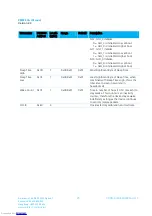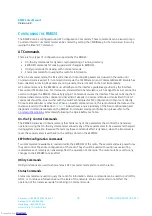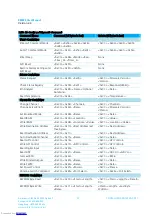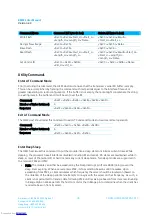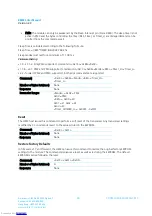
RM024 User Manual
Version 2.3
Americas: +1-800-492-2320 Option 2
Europe: +44-1628-858-940
Hong Kong: +852-2923-0610
www.lairdtech.com/wireless
24
CONN-GUIDE-RAMP24-0413
Wake Count (EEPROM 0xCF)
Time in number of hops (13.19 ms each) to stay awake during cyclic sleep. This counter is an inactivity
counter, therefore the counter is reset as long as the device continues to transmit packets over the RF
interface.
Note: Once the Wake Counter has expired, the radio waits for a slot of inactivity (meaning that no RF
packet is being received/transmitting, the serial port is idle, and the radio is not in AT Command
mode). Once all of these conditions are met, the radio enters its sleep cycle. To prevent the radio
from entering its sleep cycle or to force it out of its sleep cycle, the 9600 baud pin can be held low.
Sleep Indicator (EEPROM 0x45, bit 6)
When enabled, GIO_1 toggles low during sleep and high when the module is awake.
Sniff Permit (EEPROM 0x45, bit 0)
Sniff Permit allows a radio to receive a data packet from another radio on the network regardless of the
destination MAC address in the packet. This allows an OEM to create a sniffer for all network traffic. Sniff
Permit must be enabled on the transmitting radio to grant its permission to be heard. Sniff Report and Sniff
Permit must be enabled on the sniffer radio to cause it to send sniffed packets out the serial port.
System ID (EEPROM 0x76)
System ID is similar to a password character or network number and makes network eavesdropping more
difficult. A receiving transceiver will not go in range of or communicate with another transceiver on a
different System ID. System ID can be ignored on a client by enabling Auto System ID.
Transmit Retries (EEPROM 0x4C)
When transmitting addressed packets, the RF packet is sent out to the receiver designated by its destination
address. Transmit Retries is used to increase the odds of successful delivery to the intended receiver.
Transparent to the OEM host, the transmitter sends the RF packet to the intended receiver. If the receiver
receives the packet free of errors, it sends the transmitter an acknowledgement. If the transmitter does not
receive this acknowledgement, it assumes the packet was never received and retries the packet. This
continues until the packet is successfully received or the transmitter exhausts all of its retries. The received
packet is only sent to the OEM host if and when it is received free of errors.
Note: Setting to 0 is equal to 256.
Unicast Only (EEPROM 0xC1, bit 3)
To prohibit transceivers from receiving broadcast packets, Unicast Only can be enabled. Unicast Only restricts
the transceiver to only receive addressed packets.
Downloaded from
Downloaded from
Downloaded from
Downloaded from
Downloaded from
Downloaded from
Downloaded from
Downloaded from
Downloaded from
Downloaded from
Downloaded from
Downloaded from
Downloaded from
Downloaded from
Downloaded from
Downloaded from
Downloaded from
Downloaded from
Downloaded from
Downloaded from
Downloaded from
Downloaded from
Downloaded from
Downloaded from


